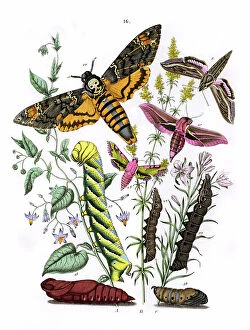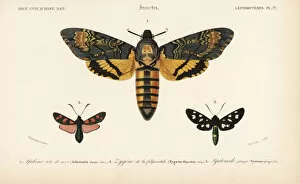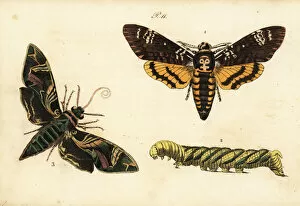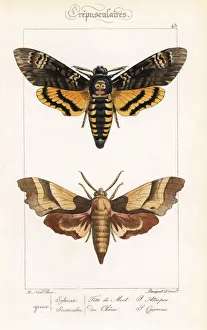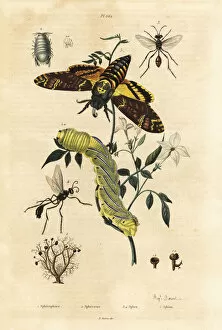Acherontia Collection
Acherontia, also known as the death's-head hawk-moth, is a fascinating creature that captivates nature enthusiasts with its unique appearance and mysterious behavior
All Professionally Made to Order for Quick Shipping
Acherontia, also known as the death's-head hawk-moth, is a fascinating creature that captivates nature enthusiasts with its unique appearance and mysterious behavior. This moth species, scientifically named Acherontia atropos, belongs to the family of Sphingidae and can be found in various parts of the world. The death's-head hawk-moth gets its name from the skull-like pattern on its thorax, resembling a human skull. Its striking appearance has earned it a place in folklore and superstitions throughout history. These nocturnal insects are known for their large size and impressive wingspan, making them an awe-inspiring sight to behold. In antique illustrations such as those found in Curtis British Entomology Plate 147, one can appreciate the intricate details of this insect's anatomy. The illustration showcases the beauty of nature through these delicate creatures fluttering amidst colorful flowers. Interestingly enough, Acherontia atropos has developed some peculiar survival tactics over time. It mimics bees or wasps by producing high-frequency sounds while feeding on nectar during breakfast time. This clever disguise helps protect it from potential predators who might mistake it for something more dangerous. This moth species interacts with other insects too; they have been spotted alongside digger wasps and ball lichen in their natural habitats. Additionally, they share similarities with other moths like oak hawkmoths and eyed hawk-moths when it comes to physical characteristics or behavioral patterns. Amongst all these variations within the Acherontia genus lies another intriguing member: the African deaths head hawkmoth and oleander hawk-moth combination. This hybridization adds even more diversity to an already captivating group of insects. As we explore nature's wonders further, we discover how interconnected everything truly is – from butterflies to moths like six-spot burnets or even oak hawkmoths – each playing a vital role in maintaining ecological balance.


